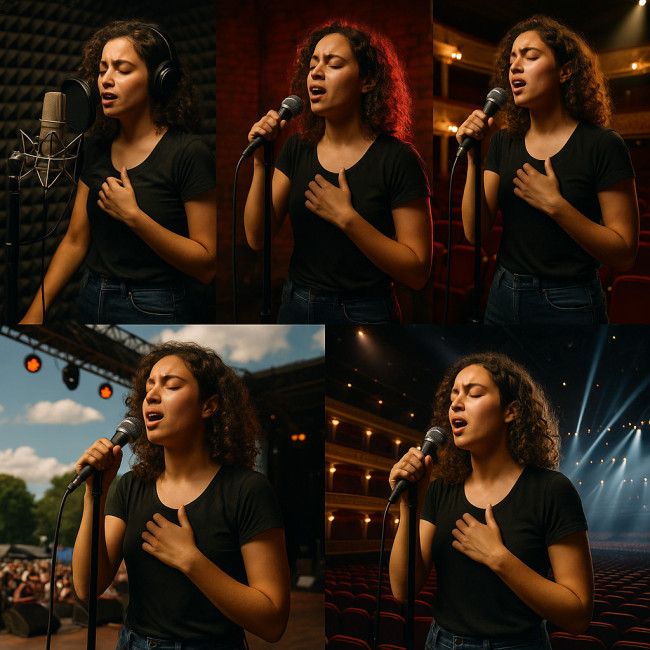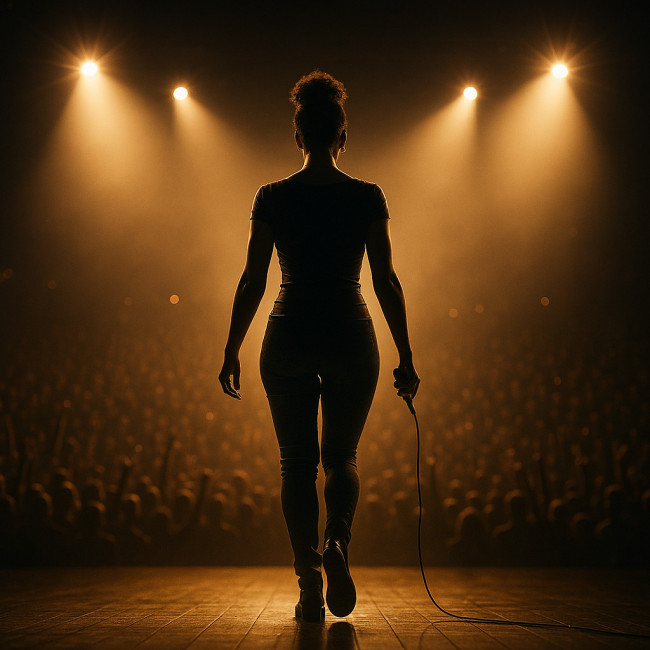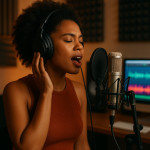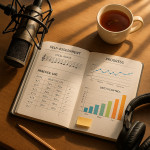From studio to stage: adapting singer training routines for different venues
Moving from a controlled booth to a roaring festival crowd can unsettle even seasoned performers. This guide shows you how to tweak proven singer training routines so your voice, mindset, and tech setup stay rock-solid in any venue.
Why venue context matters for vocal preparation

Every space changes how your voice travels, how you hear yourself, and how the audience feels your sound. Room size, acoustics, monitoring systems, and ambient noise all influence the way you should design your singer training routine. By tailoring warm-ups, breath management, and repertoire drills to the space ahead, you protect vocal health and deliver consistent quality.
Core singer training routines that never change
- Breath support circuits. Ten minutes of diaphragmatic exercises remain non-negotiable wherever you sing.
- Gentle sirens through the passaggio. Sliding from chest to head voice primes range without strain.
- Resonance mapping. Humming on ng to locate mask placement keeps tone forward and clear.
- Hydration rhythm. 250 ml of room-temperature water every 30 minutes from sound check to curtain call.
- Mental rehearsal. Two minutes of visualising the first 16 bars lowers cortisol and steadies onset.
Tactical adaptations for five common venue types
| Venue | Key Acoustic Challenge | Training Tweaks | On-site Quick Fix |
|---|---|---|---|
| Recording studio | Dead room, zero natural reverb | Focus on micro-dynamics with vocal fry onset drills; practise diminuendos to –20 dB. | Ask engineer for 1 s plate reverb in cans to avoid over-pushing. |
| Small club (≤200 pax) | Low ceilings, bass build-up | Include nasal resonance scales to improve cut-through at 2–4 kHz. | Reduce backing track low-end by 3 dB during sound check. |
| Theatre (500–1200 seats) | Natural echo at 1.5–2 s | Practise staccato articulation passages at 90 BPM to keep diction intelligible. | Request side-fill wedges angled to 45° for clearer self-monitoring. |
| Outdoor festival | Wind & temperature shifts | Add semi-occluded straw phonation just before set to re-center fold vibration. | Have a thermal scarf backstage to maintain laryngeal warmth between songs. |
| Arena (>5 000 pax) | Massive RT60, delayed slapback | Drill long-phrase breath pacing at 110 BPM; rehearse with 150 ms slapback delay in IEMs. | Use in-ear monitor with personalised ambience mic to stay pitch-secure. |
Recording studio routines in detail
Because the microphone does all the projection work, dynamic control is king. Spend one training block whisper-phonating lyrics, then crescendo slowly over eight counts. This builds sensitivity so you avoid clipping plosives. Also, rehearse with a pop filter at home to mirror the session environment.
Small club routines in detail
Clubs swallow high mids if you don't prep. Insert resonance tuning exercises—buzzing an m on scale degrees 3-5-1—to centre the tone. A short-throw venue also demands robust ear-plugs for your drummer; balanced stage volume keeps you from oversinging. For gear tips, read our guide on optimising your singer profile with clear gear notes.
Theatre routines in detail
Theatres reward vocal colour but punish sloppy consonants. Integrate tongue-twister bursts—“red leather, yellow leather”—between legato scales. Practise with a metronome, then add physical gestures to lock muscle memory. Strategically mark forte passages during afternoon spacing rehearsals to conserve stamina.
Outdoor festival routines in detail
Humidity swings dry the folds fast. Extend your singer training routine by five minutes of lip trills in setlist order to mirror high-energy pacing. Pack isotonic drinks; they replenish electrolytes lost under stage lights. Need to reach regional bookers for summer tours? Check out our piece on geo-targeted directory searches for singers.
Arena routines in detail
Line-array systems introduce noticeable delay. Rehearse with a karaoke app set to 120–150 ms echo so your brain learns to trust in-ear reference over house reflection. Pre-show, do power sirens up to 75 % of full volume to ready subglottic pressure without exhausting reserves.
Pre-show timeline checklist
- 60 min before call: Light meal, 40 g carbohydrates, no dairy.
- 45 min: Start breath support circuits; gentle neck rolls.
- 30 min: Core warm-ups plus venue-specific drills from the table above.
- 15 min: Straw-in-bottle phonation (10 reps of 10 s) to fine-tune cord closure.
- 5 min: Mental rehearsal of the opener; check in-ear battery.
- Onstage: Sip water between songs; 3-second diaphragmatic resets during applause.
Integrating tech into your singer training routine
Apps that measure SPL, pitch drift, and formant tuning give real-time insights. Pair your routine with voice tech tools so you can benchmark performance data and adjust drills fast.
Protecting vocal health on multi-venue tours
- Travel kit: portable steamer, saline spray, disposable straw, herbal lozenges.
- Sleep hygiene: 7–9 hours, elevated pillow for reflux prevention.
- Noise discipline: Wear -25 dB filters at after-parties.
- Monitoring logs: Rate vocal fatigue 1–5 after each show to spot patterns.
For more credibility boosters—think badges, endorsements, and verified credits—scan our article on directory credibility hacks for singers.
Case study: one setlist, three venue adaptations
Soul singer Maya Jones toured with the same 40-minute setlist in a studio session, a 250-cap club, and a 10 000-seat arena within six months. By logging air time, SPL averages, and subjective fatigue, she discovered:
- Studio: Average SPL 72 dB; 0 % fatigue.
- Club: Average SPL 86 dB; 20 % fatigue without nasal resonance drills.
- Arena: Average SPL 96 dB; fatigue down to 15 % after delay-calibrated rehearsals.
The takeaway: objective monitoring + venue-specific tweaks slash strain while sustaining impact.
Stay visible while you refine your routine
Pro-level training is half the battle; discovery is the other. Publishing rehearsal clips and annotated warm-ups on platforms such as Artfolio's singer training hub shows bookers you invest in craft, not just performance.
Ready for a quick knowledge check?
FAQ
- How early should I start venue-specific singer training routines?
- Begin at least three rehearsals before the gig. This timing lets your muscle memory adapt without compromising core technique.
- Do I need different warm-ups for morning versus evening shows?
- Yes. Morning calls often require an extra 5 minutes of light phonation because the vocal folds are less hydrated and elastic after sleep.
- Can I use the same in-ear monitor mix in every venue?
- No. Always recalibrate ambience and EQ to match room acoustics; otherwise, you risk pitch drift and unnecessary vocal exertion.
- Is straw phonation safe before every performance?
- Absolutely. Semi-occluded vocal tract exercises are low-impact and efficient for last-minute reset; just keep water at hand.
- What if I have back-to-back shows in different venue types?
- Log fatigue scores, adjust setlist keys down a semitone if needed, and shorten sound checks with pre-saved console scenes.
Take the stage with confidence

Mastering singer training routines for diverse venues transforms unpredictability into opportunity. You'll safeguard your voice, wow audiences, and prove to bookers that you're a reliable pro. Lock these tweaks into your daily practice, and your next show—whether studio live session or stadium spectacular—will feel like home.
Need personalised guidance? Bookmark this article, share it with your band, and schedule a rehearsal that mirrors your upcoming space. Your voice will thank you—and so will your audience.











